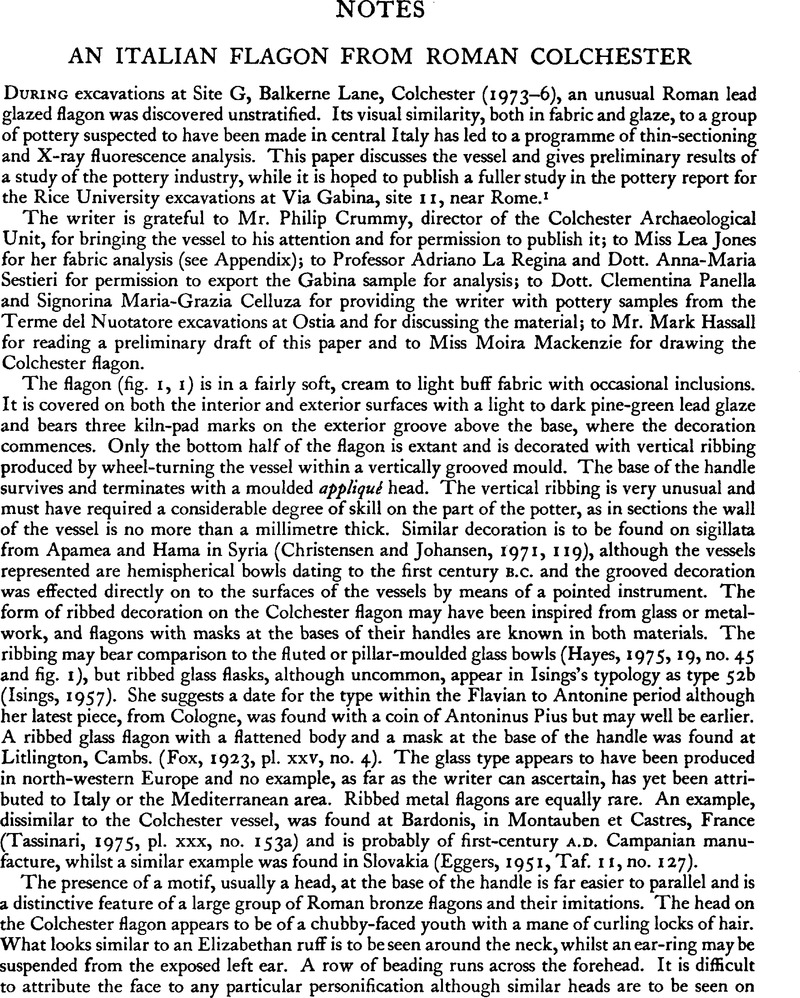Article contents
Abstract

- Type
- Notes
- Information
- Copyright
- Copyright © The Society of Antiquaries of London 1979
References
Notes
4 Archaeologia, v (1779), 325, pl. XXVII, item T.Google Scholar
5 Sussex Arch. Coll. civ (1966), n. 99.
6 Ibid, lxiv (1922), 104.
7 Lethaby, W. R., Londinium (1923), p. 25.Google Scholar
8 Sussex Arch. Coll. lxxx (1939), 63.Google Scholar
9 Verulamium (1936), p. 141.
10 Excavations at Fishbourne (Soc. Ants. Res. Rep. No. 26), ii (1971), p. 43.Google Scholar
11 Sussex Arch. Coll. lxxvi (1935), 185.Google Scholar
12 Ibid. lxxx (1939), 78.
13 Information from Dr. W. H. Manning.
14 Information from Mr. Clive Partridge.
15 Sussex Arch. Coll. lxxix (1938), 20.Google Scholar
16 Ibid. lxiv (1922), 104.
17 Ibid. lxxix (1938), 19.
18 Ibid., n. 6.
19 Ibid., n. 11.
20 Antiq. Journ. xxxvi (1956), 45.Google Scholar
21 Information from Mr. D. Batchelor, of Central Excavation Unit.
22 Lugli, G., La technica edilizia romana, i (1960), 550.Google Scholar
23 Vitruvius, De Architectura, VIII, 4, 2.
24 Though there is a variant reading ‘hamatae’, ‘mammatae’ seems most likely to be correct and is accepted in the Oxford Latin Dictionary (fasc. V. 1070). Pliny the Elder also used the word in ‘ad balineas mammatis’ (Natural Histories, xxxv, 159).
25 Ibid., n. 7.
26 Britannia, viii (1977), 346–7, fig. 6.Google Scholar
27 Ibid., n. 9.
28 Ibid., n. 20.
29 Ibid., n. 10.
- 1
- Cited by


